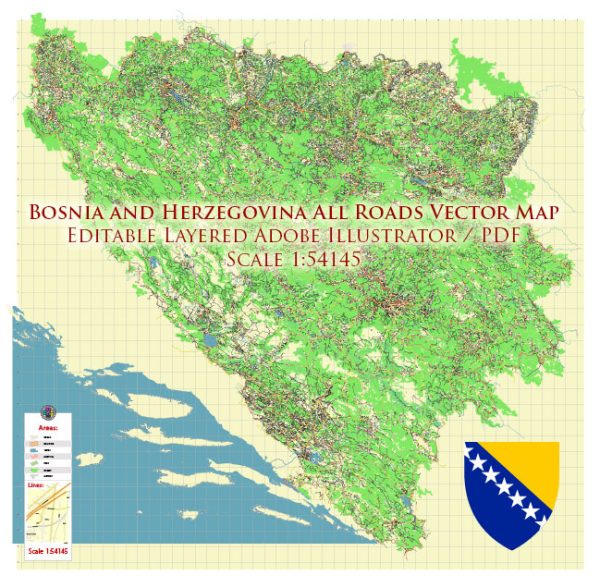The history of urban development in Bosnia and Herzegovina is a complex and rich one, shaped by a combination of historical, cultural, and political influences. The region, situated in the Balkans, has a long and diverse history that has left a lasting impact on its urban centers. Here is a brief overview of the key developments in the history of urban development in Bosnia and Herzegovina:
- Ancient Period:
- The urban history of Bosnia and Herzegovina dates back to ancient times when various Illyrian, Roman, and Byzantine settlements existed in the region. Some of the most notable ancient cities include Aquae Sulphurae (modern-day Ilidža) and Daorson.
- Medieval Period:
- The medieval period saw the emergence of medieval Bosnian towns, such as Visoko and Jajce. These towns were often built on hills for defensive purposes and featured fortifications and churches.
- Ottoman Era (15th-19th centuries):
- The most significant influence on urban development in Bosnia and Herzegovina came with the Ottoman Empire’s conquest of the region in the 15th century. The Ottomans established numerous cities and towns, characterized by their distinctive architecture, including mosques, bazaars, and hammams. Sarajevo, the capital, developed into a thriving Ottoman city, featuring a bustling bazaar and numerous mosques.
- Austro-Hungarian Rule (19th-20th centuries):
- In the late 19th century, Bosnia and Herzegovina came under Austro-Hungarian rule. This period saw significant urban development with the introduction of European-style architecture, infrastructure, and urban planning. Sarajevo’s architecture, in particular, reflects this influence, with Austro-Hungarian-style buildings like the Town Hall and the National Museum.
- 20th Century:
- The 20th century brought significant changes and challenges to Bosnia and Herzegovina. After World War I, the region became part of the Kingdom of Yugoslavia. Urban development continued, and many modernist buildings were constructed. During the Yugoslav era, Sarajevo hosted the 1984 Winter Olympics, leading to extensive urban development and infrastructure improvements.
- Yugoslav Wars (1990s):
- The early 1990s brought the devastating Yugoslav Wars, which had a profound impact on urban areas throughout Bosnia and Herzegovina. Sarajevo, in particular, suffered heavy damage during the siege of the city.
- Post-War Reconstruction and Independence:
- After the Dayton Agreement in 1995, Bosnia and Herzegovina gained independence, and a period of post-war reconstruction began. Efforts were made to rebuild and revitalize urban centers, including the restoration of historic buildings and the construction of new infrastructure.
- Contemporary Urban Development:
- In recent years, Bosnia and Herzegovina’s urban development has been characterized by a mix of historic preservation and modernization. Many cities and towns continue to preserve their historical architecture while embracing contemporary urban planning and infrastructure projects.
Today, Bosnia and Herzegovina’s cities and towns, including Sarajevo, Mostar, and Banja Luka, reflect a rich tapestry of history, blending various architectural styles and influences from the region’s complex past. Urban development in the country continues to evolve as it seeks to balance preserving its cultural heritage with meeting the demands of the modern world.


 Author: Kirill Shrayber, Ph.D.
Author: Kirill Shrayber, Ph.D.